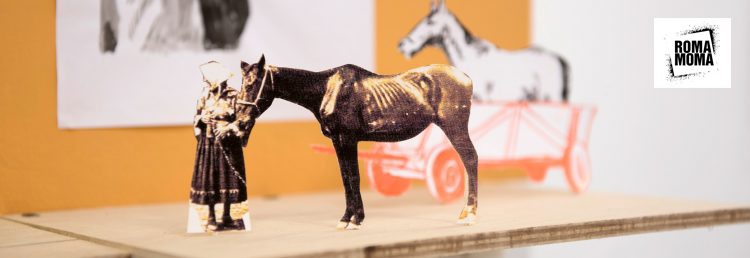What is ROMAMOMA?
There is no Roma Museum of Contemporary Art. But if there were, what should it be like? What kinds of artworks should it display and to whom? Based on what principles should it build its collection? How should it relate to existing Roma collections and Roma cultural heritage? How should it address stereotypical expressions of Roma representation, and the potential pitfalls of self-representation? Is there even a need for a Roma Museum of Contemporary Art and is this the most suitable name for it?
RomaMoMA is a contemporary art project initiating a forum for collaborative reflection on a future Roma Museum of Contemporary Art, with the involvement of local and international, Roma and non-Roma artists, cultural experts, social scientists and the civil sphere. RomaMoMA is a joint initiative of the European Roma Institute for Arts and Culture (ERIAC) and OFF-Biennale Budapest. In the form of a contemporary art project, by means of involving stakeholder communities, and exploiting the possibilities of collective thinking and discourse, as well as the critical and discursive potentials of contemporary art, it – “prefiguratively” – “creates” itself: an imagined and yet real space that is home to both the Roma arts and artists. The suffix in the title, “MoMA” (Museum of Modern Art) is a reference to the prototype of art museums, and it emphasises the dominant role of museums in processes of canonisation, as well as the lack of self-representation by minority groups in museum collections.

Oto Hudec: Invisible Museum, project, 2017
RomaMoMA aims to engage in dialogue with the above actors across nations. At the same time, RomaMoMA – albeit not affiliated with any government programme or party policy – is a political statement. On the one hand, because the question of the museum is not the private business of the Roma community, because it concerns the redistribution of resources and the transformation of power relations within the society. The focus is not on the realisation of the institution, but on the “act” of conception. It is a discursive and performative process, in the course of which questions regarding the “museum” are discussed with the involvement of every stakeholder: collection strategies, exhibition practice, and art education and mediation methodology, alongside such essential questions as the image the museum should convey of the Roma, and the impact it might have on the impacted (minority and majority) communities. Furthermore, RomaMoMA devotes particular attention to addressing the young public, developing a proprietary methodology for the reinforcement of social dialogue between Roma and non-Roma communities.
Rather than the realisation of a specific museum concept, the project connects a range of programmes (exhibitions, film screenings, performance, workshops, etc.), modelling nomadic, flexible institutional operation, which raises questions and formulates statements with the devices of contemporary art. It aspires to achieve all of this in accordance with the museum approaches of the 21st century that extend social engagement to reconsidering the relations of museum narratives, cultural heritage and contemporaneity. Although each of the presented artworks contributes to the creative act of the collaborative conception with a unique voice, they share a common desire for narrative, speech and dialogue; their raw material is also shared: contemporary society.
RomaMoMA is part of the European Roma Institute for Arts and Culture (ERIAC)’s International Cultural Outreach Program. Building on previous international cultural outreach projects, the International Cultural Outreach Program, financed by the German Federal Foreign Office, aims to facilitate and strengthen the engagement of Roma and non-Roma individuals and organizations who are committed to ERIAC’s values to support the exchange of creative ideas across borders, and to promote Roma organizations, intellectuals, and artists to form multilateral initiatives and regional alliances.
